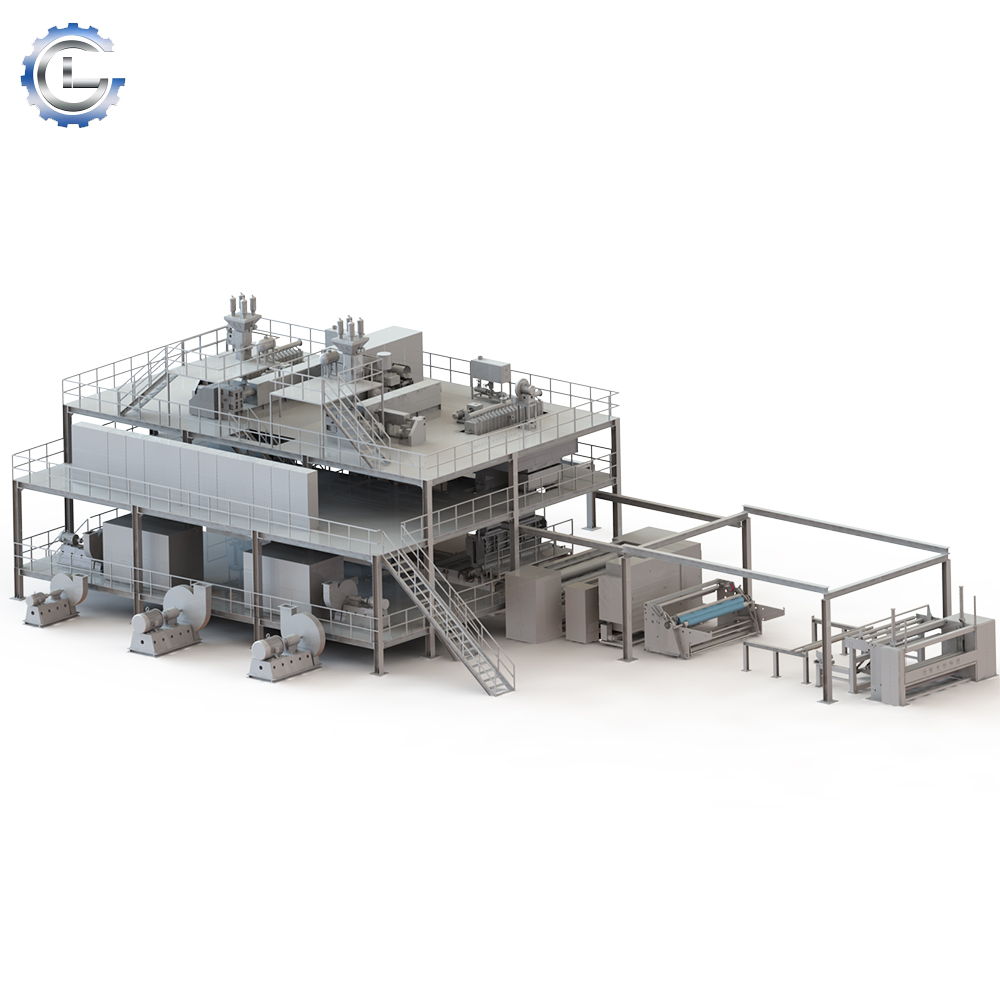No reino da fabricação têxtil, inovação e eficiência reinam supremas. As máquinas de fabricação de tecido não tecido Spunbond revolucionaram a indústria, transformando a produção de tecidos não tecidos com sua tecnologia avançada e versatilidade. Neste guia completo, vamos mergulhar no mundo de máquinas para fabricar tecido não tecido spunbond, explorando seus intrincados processos, componentes principais, e as diversas aplicações dos tecidos que produzem, impulsionando o progresso em vários setores.

Compreendendo as máquinas de fabricação de tecido não tecido Spunbond
As máquinas para fabricar tecido não tecido Spunbond empregam um processo exclusivo para criar tecidos não tecidos sem as técnicas tradicionais de tecelagem ou tricô. Estas máquinas utilizam polipropileno ou outros polímeros termoplásticos para produzir filamentos contínuos que são unidos para formar uma estrutura de tecido coeso..
Componentes principais das máquinas para fabricação de tecido não tecido Spunbond:
- Extrusora de polímero: A extrusora derrete o polímero termoplástico, criando uma corrente de polímero fundido que está pronta para a formação de fibras.
- Fiandeiras: O polímero fundido é forçado através de fieiras, que contêm pequenos orifícios que moldam o polímero em filamentos contínuos.
- Sistema de resfriamento: Os filamentos extrudados são rapidamente resfriados usando jatos de ar ou água, solidificando-os em fibras.
- Formação da Web: As fibras resfriadas são desenhadas em uma teia, que é uma folha contínua de tecido não tecido.
- União: A web passa por vários métodos de ligação, como ligação térmica ou ligação química, para criar uma estrutura de tecido forte e coesa.
Vantagens dos tecidos não tecidos Spunbond:
- Força e durabilidade: Os tecidos não tecidos spunbond apresentam excepcional resistência à tração e resistência ao rasgo, tornando-os altamente duráveis.
- Resistente à água: A estrutura não tecida do tecido repele eficazmente a água, tornando-o adequado para aplicações onde a resistência à umidade é crucial.
- Respirabilidade: Apesar de sua natureza resistente à água, tecido não tecido spunbond permite permeabilidade ao ar, garantindo respirabilidade e conforto em diversas aplicações.
- Leve e flexível: A natureza leve e flexível do tecido facilita o manuseio, manipular, e converter em diferentes formas e formatos.
- Ecológico: Os tecidos não tecidos Spunbond são recicláveis e reutilizáveis, contribuindo para práticas sustentáveis e reduzindo o impacto ambiental.
Aplicações de tecidos não tecidos Spunbond:
A versatilidade dos tecidos não tecidos spunbond levou à sua ampla adoção em vários setores:
- Medicina e Saúde: As propriedades higiénicas do tecido tornam-no ideal para batas cirúrgicas, máscaras faciais, lençóis descartáveis, e outros suprimentos médicos.
- Higiene e Cuidados Pessoais: O tecido não tecido spunbond é amplamente utilizado em fraldas para bebês, produtos de higiene feminina, lenços úmidos, e toalhas descartáveis devido à sua suavidade, absorção, e conforto.
- Agricultura: A durabilidade do tecido e as propriedades de resistência à água o tornam adequado para coberturas de culturas, tapetes de controle de ervas daninhas, e sacos de mudas, aumentando a produtividade agrícola.
- Embalagem: O tecido não tecido spunbond serve como material de embalagem leve e ecológico para vários produtos, incluindo comida, bebidas, e bens de consumo.
- Aplicações Industriais: A resistência e versatilidade do tecido o tornam útil em sistemas de filtração, materiais de isolamento, e roupas de proteção em ambientes industriais.
As máquinas para fabricar tecido não tecido Spunbond revolucionaram a indústria têxtil com sua capacidade de produzir tecidos não tecidos de alta qualidade de maneira eficiente e econômica. As propriedades excepcionais e as diversas aplicações dos tecidos não tecidos spunbond os tornaram indispensáveis em diversos setores., impulsionando a inovação e a sustentabilidade. Ao abraçar o poder das máquinas de fabricação de tecido não tecido spunbond, as empresas podem desbloquear novas possibilidades e aumentar a sua vantagem competitiva no cenário têxtil em constante evolução.
